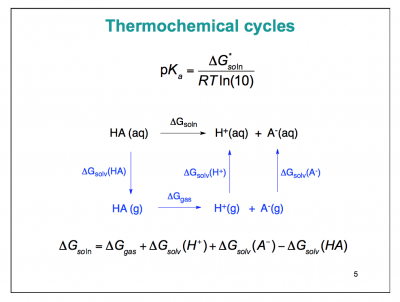Difference between revisions of "Computational Chemistry II"
Jump to navigation
Jump to search
| (12 intermediate revisions by the same user not shown) | |||
| Line 30: | Line 30: | ||
::13C NMR | ::13C NMR | ||
::1H NMR | ::1H NMR | ||
| + | |||
| + | ===Peptide Bond=== | ||
| + | Construct the following structure (R=H) | ||
| + | |||
| + | {| | ||
| + | |[[File:IMG_1082.jpg|600px|thumb|left|alt text]] | ||
| + | |} | ||
| + | |||
| + | Submit a job Energy Optimization/HF/Routine | ||
| + | |||
| + | Determine how well this level of calculation matches the values from the crystal structure. | ||
| + | |||
| + | ===Visualizing Protein Structure=== | ||
| + | |||
| + | [https://www.youtube.com/watch?v=wiKyOF-pGw4 PyMol for Beginners] | ||
Latest revision as of 12:33, 28 March 2019
These are additional computational activities...
Computation of Thermodynamic Data
Calculation
- optimize and vibrational frequency
3.8088e-4 H = 1 kJ/mol
Heat of Combustion
http://homepages.gac.edu/~anienow/CHE-371a/Labs/Heats%20of%20Formation.pdf
pKa
https://www.uow.edu.au/~adamt/Trevitt_Research/Links_files/pKa%20workshop%20slides.pdf
NMR Computations
Calculation
- optimize energy first using B#LYP/6-31G(d)
- then do NMR calculation using optimized geometry
- view NMR setting TMS shift to 0.0.
- 13C NMR
- 1H NMR
Peptide Bond
Construct the following structure (R=H)
Submit a job Energy Optimization/HF/Routine
Determine how well this level of calculation matches the values from the crystal structure.


